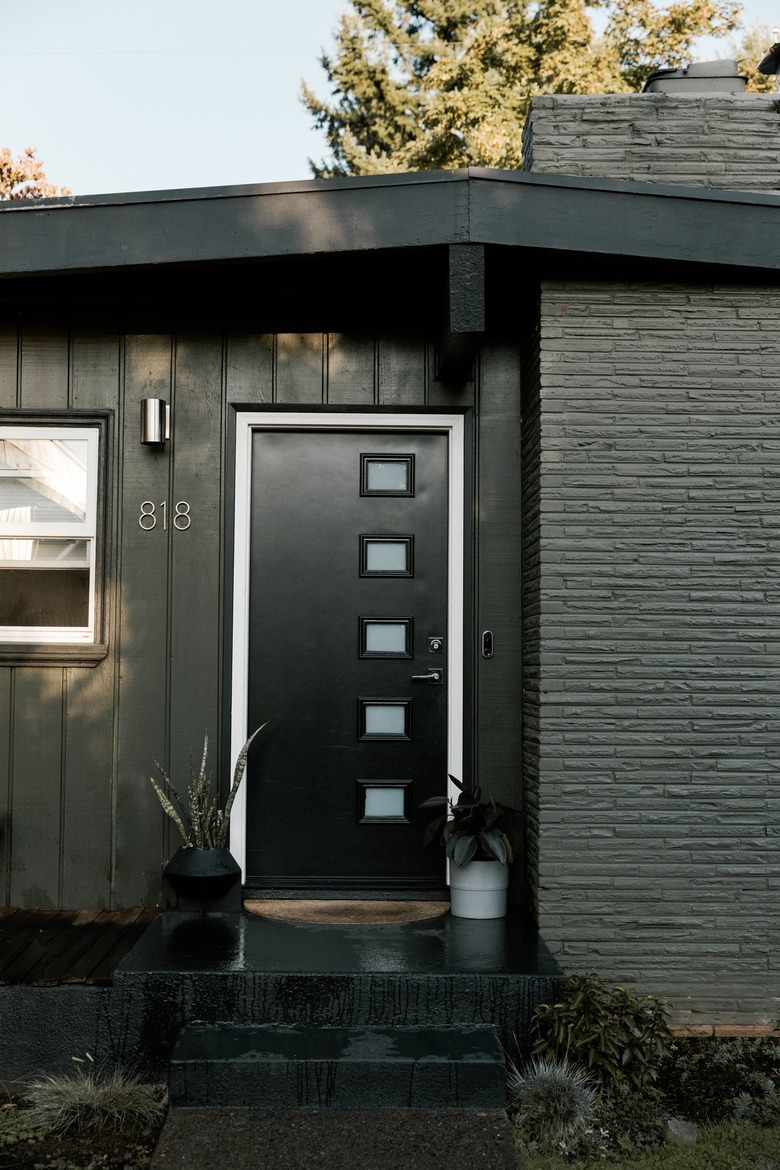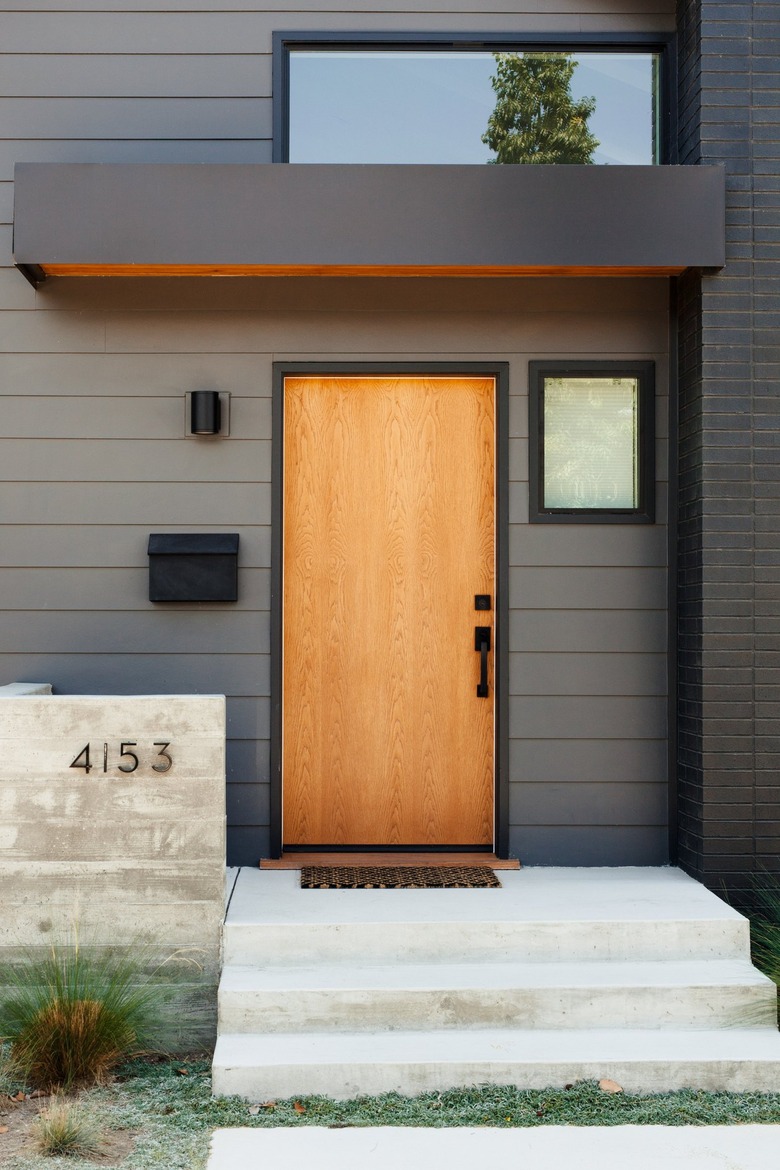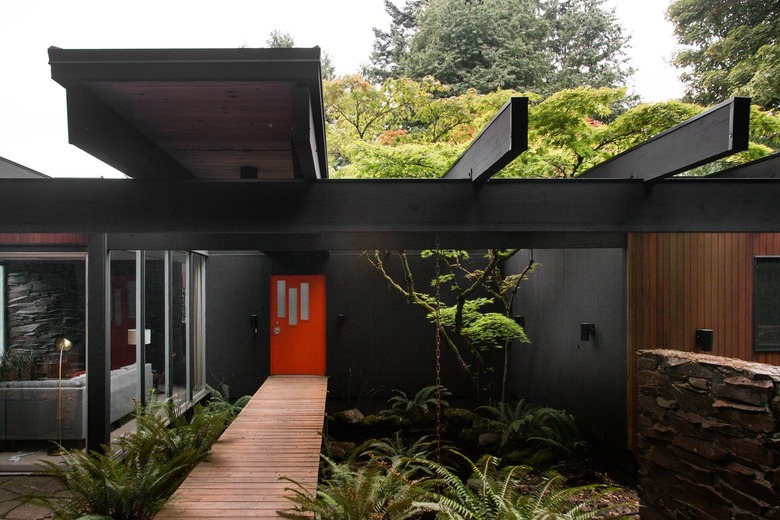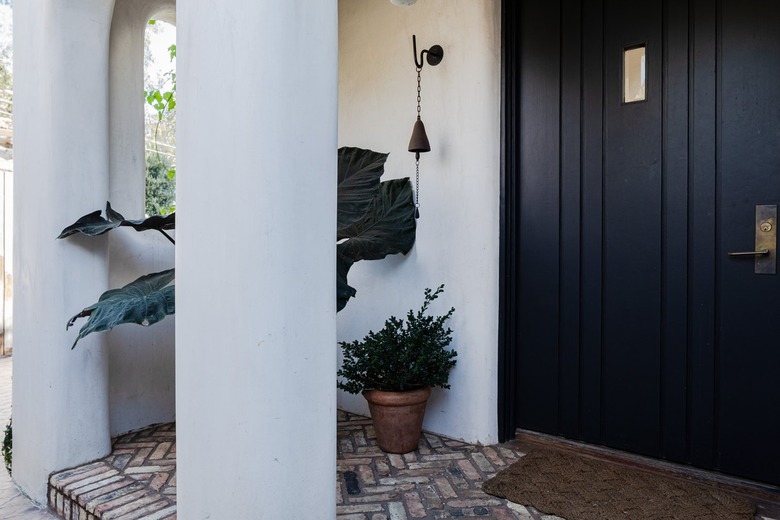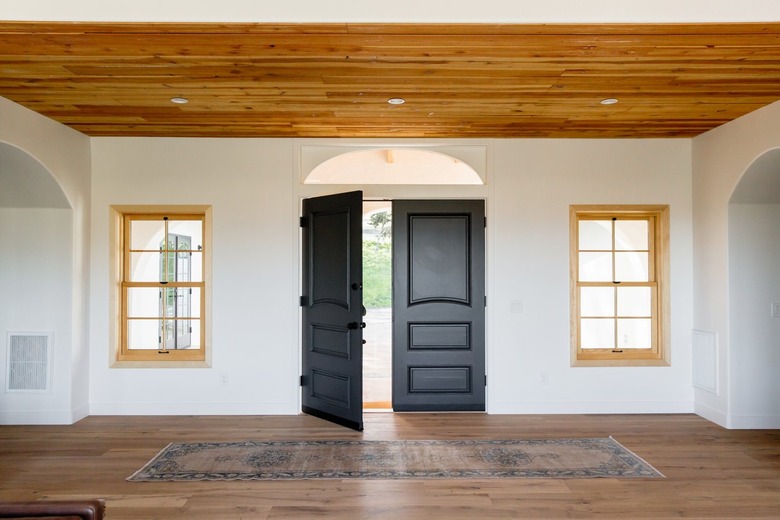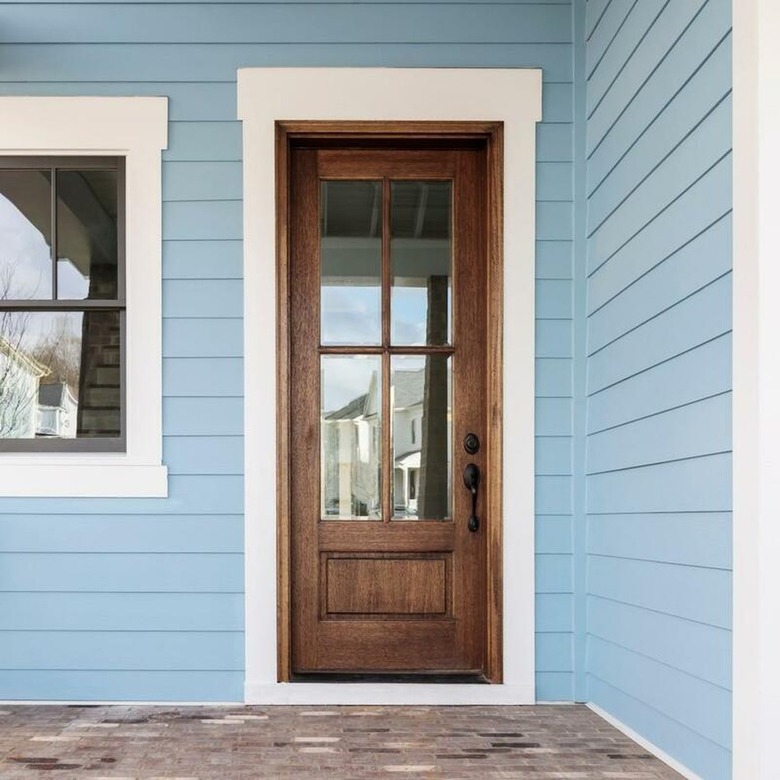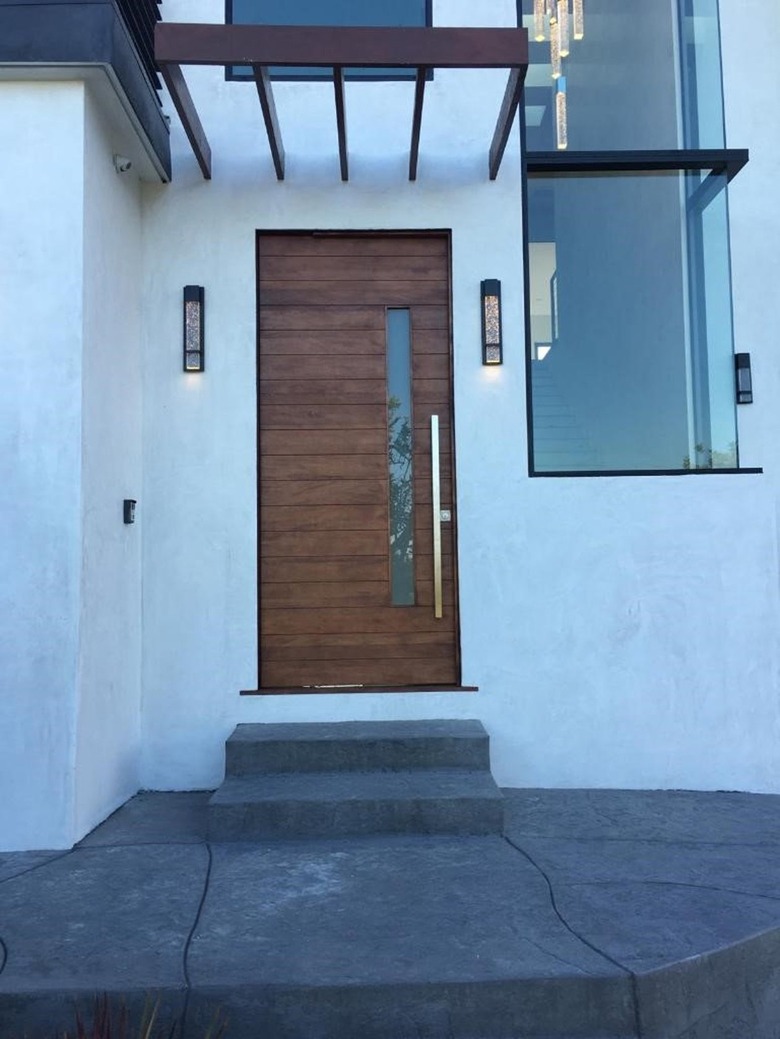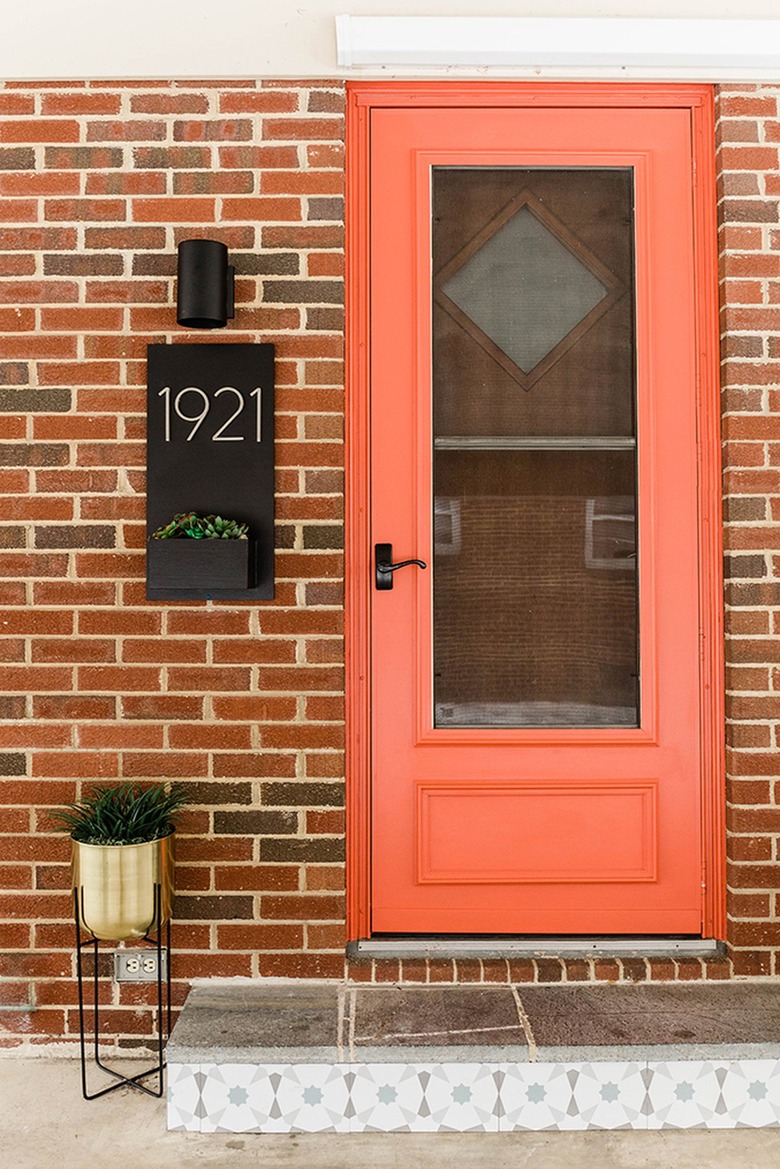How To Choose A Front Door That's Welcoming, Safe, And Weatherproof
We may receive a commission on purchases made from links.
You probably don't think much about it as you go in and out each day, but the truth is that you ask a lot from your front door. It must be strong, secure, and capable of resisting both the weather and potential intruders. At the same time, it also needs to be attractive enough to enhance your home's curb appeal and feel welcoming when greeting visitors.
Ready to upgrade your door but not sure where to start? Here are some important things to consider.
Types of Installation
Types of Installation
Before you go shopping for a front door, it's important to know what kind of installation you're looking at. Doors come either pre-hung in a frame or as slabs. A slab is as basic as it gets. It's simply a door with no hinges, handles, or other hardware. A slab works well if your door jamb and frame are in good condition, and you just want to swap out the door itself.
Sometimes, however, you need more than just a door. If your door frame is rotting or in bad shape, opt for a pre-hung door. These doors are already installed inside a door frame, allowing you to replace the door and the frame all at once. It also typically has a space for a door knob or handleset already in place, which means you won't have to do the cutting yourself (or hire someone to do it for you).
It's important to remember that no house is perfectly square, but the new door you buy will be. Pre-hung doors require shims to adjust the fit. This may lead to gaps around the door frame, but you or your installer will cover these with trim. Door slabs are even more fiddly and may require trimming of the door itself (on wood doors) in addition to shims and hardware adjustments.
Front Door Materials
Front Door Materials
Although you can get a glass front door, most homeowners opt for wood, steel, or fiberglass. Whether painted or stained, homeowners have been using wood to make front doors for years. Some are solid wood, but many of today's doors feature wood veneer over an engineered wood core to help prevent the warping and swelling that can occur with humidity changes and sun exposure. If you go this route, wood is strong and durable but will need periodic resealing or repainting.
Steel doors last longer than wood and are more resistant to warping. They also cost less than wood and insulate better. Some people feel that steel doors aren't attractive, and in the past, many weren't. Modern designs, however, now allow for steel that mimics the look of wood. Like wood, steel can require periodic repainting if the existing paint starts to chip or peel. It's almost important to note that unprotected steel is prone to rust.
Given the shortcomings of wood and steel, some homeowners instead opt for fiberglass. Fiberglass doors are completely maintenance-free, and like steel, they can mimic the look of wood. These doors are so reliable that some manufacturers warranty their fiberglass doors for as long as you own your house.
Protection and Security
Protection and Security
The elements aren't the only thing your front door keeps out of your home. A solid door can stop intruders no matter what it's made of. Even glass doors are secure, as they utilize double-paned tempered glass with an anti-shatter coating. At the end of the day, all of the available front door materials offer about the same amount of protection from break-ins.
When break-ins do happen, it's usually the lock that fails rather than the door. A deadbolt is the best way to protect your front door because it can't be forced open with a credit card like many door latches can. For further protection and security, you can add longer screws to the strike plate, high-security locks, and many other enhancements.
Insulation and Efficiency
Insulation and Efficiency
Now that you have a place of your own and your very own energy bills, you likely better understand why your parents were always yelling about not paying to heat the outdoors. Your front door covers a pretty big hole in your house, so you want it to be as well insulated as possible.
Manufacturers typically measure their front door insulation by issuing the door a U-factor. The U-factor determines how well the door prevents the heat in a room from escaping. The lower the U-factor on a scale of 0 to 2, the better the door at preventing heat transfer.
The solar heat gain coefficient (SHGC) is also an important number to know. The SHGC measures how well or how poorly a material resists heat from the sun. The SHGC that's best for you depends on your climate. In the summer, a low SHGC helps keep your home cooler. In the winter, however, a high SHGC rating means your door will absorb more heat and help keep your home warm. The SHGC rating scale goes from 0 to 1.
Insulation is rated with a measure known as the R-value, so the label on a door may contain this information along with the U-factor and SHGC. The higher the R-value, the better the insulating performance. Solid wood doors have the lowest R-value, usually coming in at R-2 or R-3. Fiberglass and steel doors, however, usually contain a core of insulation, raising their R-value to R-5, R-6, or even R-7. The easiest way to rate any door is to look for the ENERGY STAR label. Doors bearing this mark meet or surpass energy-efficiency standards set by the United States Department of Energy.
But don't get so focused on the door that you forget the frame. Most air leaks happen in gaps around the frame and between the frame and the door itself. Always make sure that your door is properly weatherstripped and that the frame in its opening has insulating foam or another type of insulation.
Inward or Outward Swing
Inward or Outward Swing
When buying a new front door, you'll need to decide whether you want the door to open inward or outward. Front doors generally open inward, but there are compelling reasons to hang an outward-opening door depending on where you live.
If you live in an area prone to hurricanes and extremely high winds, doors that open outward make sense. The wind can't blow an outward-opening door in, leaving you better protected in a storm. Outward swinging doors are also much more difficult to kick in. The hinges are on the outside of these doors, but modern exterior door hinges are made to be tamperproof and can be hidden or covered altogether.
You don't want a front door with an outward swing if you live in a place that sees frequent heavy snowfalls. Drifting snow may pile up in front of the door, making it difficult or impossible to open a front door that swings out. If the weather isn't an issue for you, the direction your door swings is largely a matter of personal preference. However, be aware that a door that swings outward requires visitors to stand back (or step back) to allow the door to open.
Front Door Styles
Front Door Styles
When it comes to style, you can get whatever your heart desires. You can go with a glass door for a modern look or opt for a craftsman style design. Single and double entry doors are both readily available, and you can have a square door frame or add an arch if you like. The possibilities are endless and not just when it comes to the door itself. The right hardware can really finish the look.
When it comes to the style, your personal taste and the look of your house will guide your choice. The goal is to pick a door you like while making sure it's not out of place on your home's exterior. You probably don't want a sleek minimalist front door on your farmhouse or cottage, for instance. If you're not sure how you feel about a certain door, hop online and find an app or a program that will let you upload a picture of your house and experiment with different looks.
Front Door Costs
Front Door Costs
If you're on a tight budget, you'll find doors made with a wood veneer over an engineered wood core one of your cheapest front door options at about $200. Some companies place insulation inside a hollow door and laminate it in wood, which increases the insulation value and raises the price to between $300 and $500. A solid wood door, however, will cost you $600 or more. Steel doors start at about $150, and fiberglass doors start at about $200.
The actual price of your door will vary based on size and design. A basic door costs less than one with a decorative glass insert, for example. You will also pay less for a slab than you will for a pre-hung door. Doors outfitted with sidelight panels, lighting systems, premium hardware, and other extras also cost more. The full setup for one of these entryway systems can run between $2,000 and $4,000.
Front Door Warranties
Front Door Warranties
Every door manufacturer is different, but all should offer some type of warranty. Although there are always exceptions, fiberglass doors tend to have the longest warranties at about seven to 10 years. Some high-end manufacturers will warrant fiberglass doors for as long as you own your home. Steel door warranties also vary a great deal, lasting anywhere from five to 15 years. Wood doors may only be covered for one to two years, although there are exceptions.
When looking at the warranty, make sure you understand it completely. DIY or faulty installation may void some door warranties. Others offer different warranties for different parts of the door. For example, a company may warrant a glass panel for two years but cover the wood around it for five years.
If you ask a handyman or contractor to install your door for you, make sure they are willing to warrant their work. You shouldn't have to pay them to fix it again if they left a drafty hole around the door frame or installed the weatherstripping improperly.
References
- Pella: A Guide to Popular Front Door Styles
- Green Building Advisor: All About Doors
- Atkinson's Mirror & Glass: Are Glass Front Doors Safe?
- Franklin Window & Door: What You Need to Know About Exterior Door Warranties
- European Cabinets & Design Studios: 7 Tips for Choosing a Front Door
- Best Pick Reports: Buying a New Front Door: What to Ask Before You Buy
- This Old House: A Guide to Front Door Replacements
